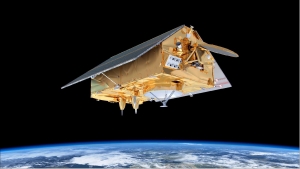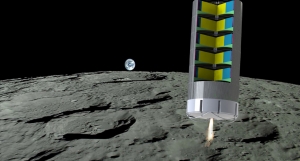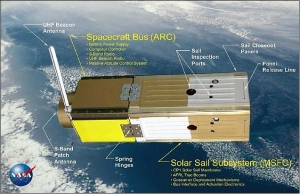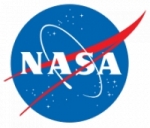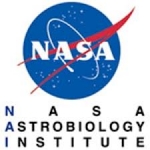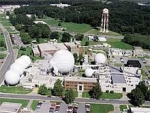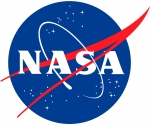Displaying items by tag: NASA
Copernicus: Sentinel-6 - Michael Freilich Mission - formerly Jason-CS Mission
Jason-CS is the second component of the hybrid solution (Jason-3 + Jason-CS) agreed to in 2009. Jason-CS will ensure continuity with Jason-3 to guarantee adequate overlap with Jason-3. At least two satellites with a 7 years lifetime each (5 years + 2 years consumables) are planned to give time before new technologies such as swath interferometry (SWOT mission) can be considered as operational. 1) 2)
The Jason-CS satellite will carry a radar altimeter package to continue the high-precision, low-inclination altimetry missions of Jason-2 and -3. It will complement the high-inclination measurements on Sentinel-3 to obtain high-precision global sea-surface topography for the marine and climate user community.
Multi-Task Logistic Module
The idea is to develop a modular logistic vehicle capable to provide in the future continuous logistic service between LEO and the Moon surface. Based on the use of a new structural concept in which the Payload cargo is retained via the use of airbag technology, the first time in Space technology, the goal is to demonstrate the structural performance of this new architecture with a scaled demonstrator to be tested in a Space laboratory. The modular characteristics will permit to launch in different missions Payload Modules and the Powered Module with orbital rendez-vous and docking, this will permit to host more propellant and send more payload mass to the Moon, as high as 6.3 Tons using advanced (restartable) LH2/LOX engine technology (at this stage even though the engine has not been identified it doesn't preclude the feasability of the concept, i.e it can be a scaled-down version of the Vinci engine). The Powered Module will mate with the Payload Modules with orbital rendezvous in LEO and once assembled the MTLM LH2/LOX engine shall provide the delta-V to go to the Moon and land. This kind of scenario that is different with respect to that of the EL3 mission has a much higher growth potential once fuel depots will be available in LEO and on the Moon surface, with the potential to guarantee a continuous logistic service between LEO and Moon. The idea is to exploit at best the availability of existing launchers such as Ariane 6. The retain of payload cargo via airbags once qualified can permit to simplify the requirements for the payload reducing its cost and this can give the opportunity to use this technology in other missions. Having airbags permanently inflated inside the Payload Module precompressing both the payload packages and the external retaining structure will permit to let the structure to work permanently in tension avoiding risks linked to buckling and this should significantly reduce the mass of the structure.
NanoSail-D2
NanoSail-D2 is a technology demonstration experiment of NASA with the primary objective to deploy a compact solar sail boom system in space.
In a previous attempt, a team from the NASA/MSFC, along with a team from the NASA/ARC (Ames Research Center), developed a solar sail mission called NanoSail-D which was lost in a launch failure aboard a Falcon 1 rocket on August 3, 2008.
Two units of the NanoSail-D satellites have been built. NASA/MSFC plans to launch the backup NanoSail-D payload from a 3U CubeSat (nanosatellite) of ARC on the FASTSat-HSV mission. FASTSat is required to launch the nanosatellite before the NanoSail-D2 payload can be launched and deployed from the nanosatellite.
GEO Innovations Ltd
GEO Innovations Ltd is an international company bringing together highly qualified associate consultants with wide experience of business and projects in the military, meteorological, communications and scientific sectors in the satellite industry. The company was formed in 2010, specifically to provide dedicated and focused consultancy and technical engineering services to the aerospace industry.
This invaluable experience provides our clients with solutions that not only improves efficiency, performance, successful acceptance testing, product launch or strategy realisation but will also endure and adapt throughout the system or business life cycle. Since GEO Innovations Ltd is an independent consultancy, the advice and solutions proposed for a client will be completely impartial.
Our business and management consultants have experience across the entire hierarchy of large international businesses working within a highly dynamic and rapidly evolving technological environment. Our team is well placed to support our clients in turning vision into achievement in a multi-cultural and international environment.
NASA Headquarters
NASA headquarters is located two Independence Square, Washington D.C., USA.
NASA headquarters houses NASA leadership who provide overall guidance and direction to the US government executive branch agency NASA, under the leadership of the NASA Administrator. Ten field centers and a variety of installations around the country conduct the day-to-day work.
To implement NASA's mission, NASA Headquarters is organized into four Mission Directorates.
- Aeronautics: Pioneers and proves new flight technologies that improve our ability to explore and which have practical applications on Earth.
- Exploration Systems: Creates new capabilities and spacecraft for affordable, sustainable human and robotic exploration
- Science: Explores the Earth, moon, Mars, and beyond; charts the best route of discovery; and reaps the benefits of Earth and space exploration for society.
- Space Operations: Provides critical enabling technologies for much of the rest of NASA through the space shuttle, the International Space Station, and flight support.
NASA Astrobiology Institute
The NASA Astrobiology Institute (NAI) is an innovative way to develop the field of astrobiology and provide a scientific framework for flight missions.
NAI is a virtual, distributed organization of competitively-selected teams that integrate astrobiology research and training programs in concert with the national and international science communities.
It was setup by NASA in 1998.
Astrobiology is the study of the origins, evolution, distribution, and future of life in the universe. This interdisciplinary field requires a comprehensive, integrated understanding of biological, planetary, and cosmic phenomena. Astrobiology encompasses the search for habitable environments in our Solar System and on planets around other stars; the search for evidence of prebiotic chemistry or life on Solar System bodies such as Mars, Jupiter's moon Europa, and Saturn's moon Titan; and research into the origin, early evolution, and diversity of life on Earth. Astrobiologists address three fundamental questions: How does life begin and evolve? Is there life elsewhere in the universe? What is the future of life on Earth and beyond?
NAI's mission is to:
- carrying out, supporting and catalyzing collaborative, interdisciplinary research;
- training the next generation of astrobiology researchers;
- providing scientific and technical leadership on astrobiology investigations for current and future space missions;
- exploring new approaches using modern information technology to conduct interdisciplinary and collaborative research amongst widely-distributed investigators;
- supporting outreach by providing scientific content for K-12 education programs, teaching undergraduate classes, and communicating directly with the public
Langley Research Center (LaRC)
Langley Research Center (LaRC) is the oldest of NASA's field centers, located in Hampton, USA.
It directly borders the Langley Air Force Base. LaRC focuses primarily on aeronautical research, though the Apollo lunar lander was flight-tested at the facility and a number of high-profile space missions have been planned and designed on-site.
Marshall Space Flight Center (MSFC)
The George C. Marshall Space Flight Center (MSFC) is the U.S. government's civilian rocketry and spacecraft propulsion research center. It is the largest center of NASA.
MSFC's first mission was developing the Saturn launch vehicles for the Apollo moon program. Marshall is today the agency's lead center for Space Shuttle propulsion and its external tank; payloads and related crew training; International Space Station (ISS) design and assembly; and computers, networks, and information management. Located on the Redstone Arsenal near Huntsville, Alabama, MSFC is named in honor of General of the Army George Marshall.
The center also contains the Huntsville Operations Support Center (HOSC), a facility that supports Space Shuttle launch, payload and experiment activities at the Kennedy Space Center, ISS launch and experiment operations. The HOSC also monitors rocket launches from Cape Canaveral Air Force Station when a Marshall Center payload is on board.
NASA Orbital Debris Program Office
The NASA Orbital Debris Program Office, located at the Johnson Space Center, is the lead NASA center for orbital debris research.
It is conducting measurements of the environment and in developing the technical consensus for adopting mitigation measures to protect users of the orbital environment. Work at the Center continues with developing an improved understanding of the orbital debris environment and measures that can be taken to control debris growth.
Wide-field Infrared Survey Explorer (WISE)
Wide-field Infrared Survey Explorer (WISE) is a NASA infrared-wavelength astronomical space telescope launched on December 14, 2009, and decommissioned/hibernated on February 17, 2011 when its transmitter was turned off.
WISE was an Earth-orbiting satellite with a 40 cm (16 in) diameter infrared telescope, which performed an all-sky astronomical survey with images in 3.4, 4.6, 12 and 22 μm wavelength range bands, over 10 months. The initial mission length was limited by its hydrogen coolant, but a secondary post-cryogenic mission continued for four more months.

